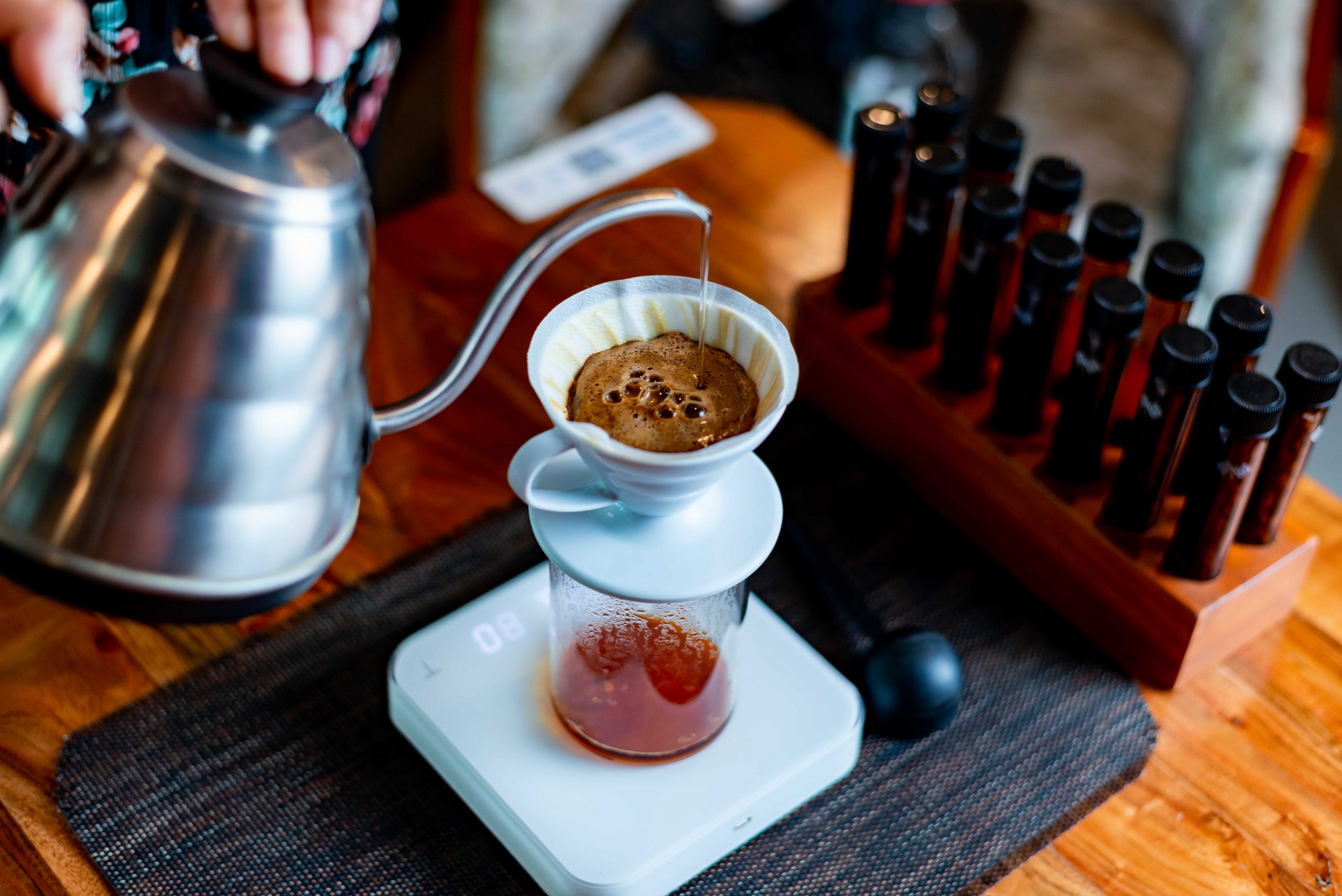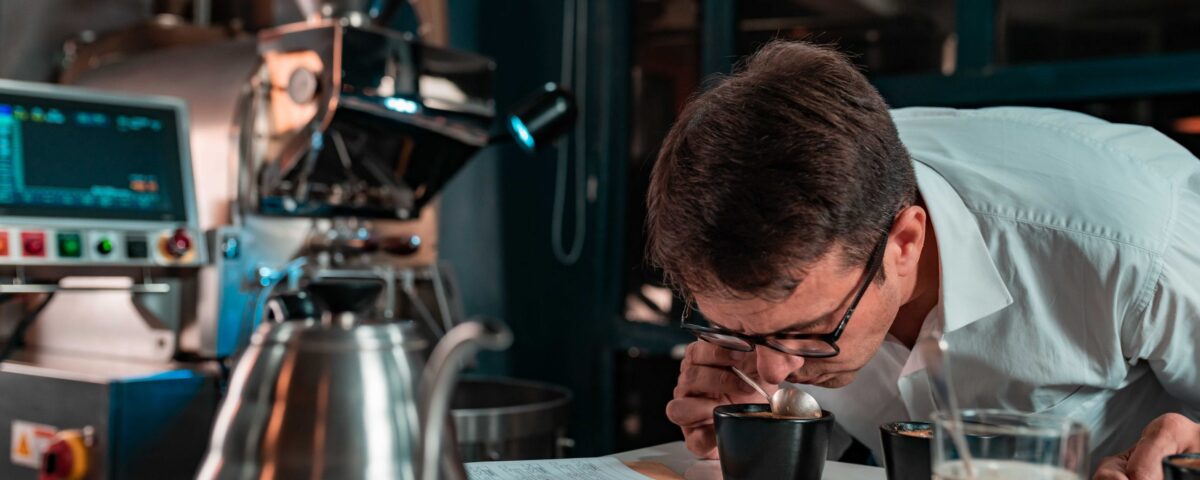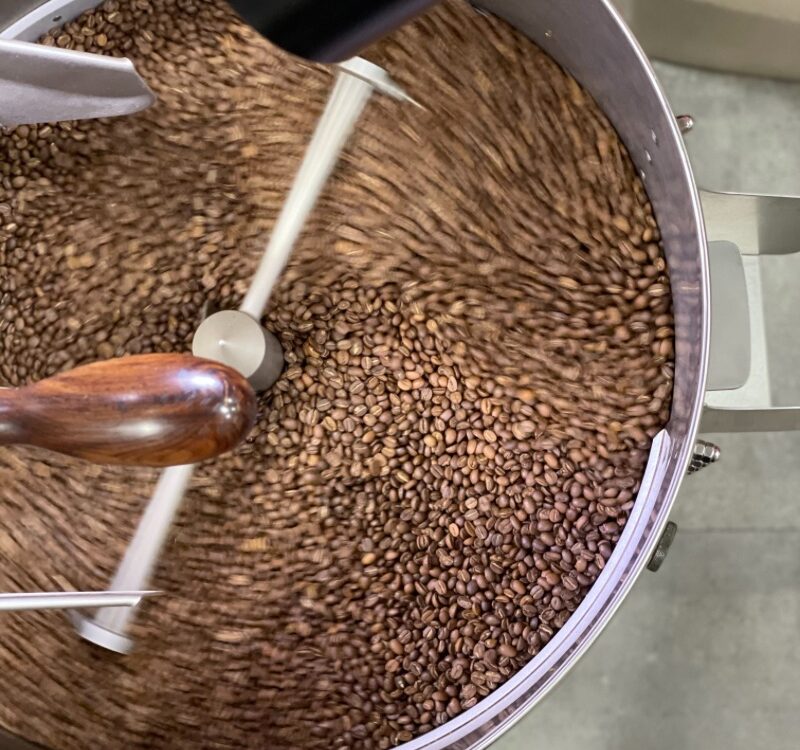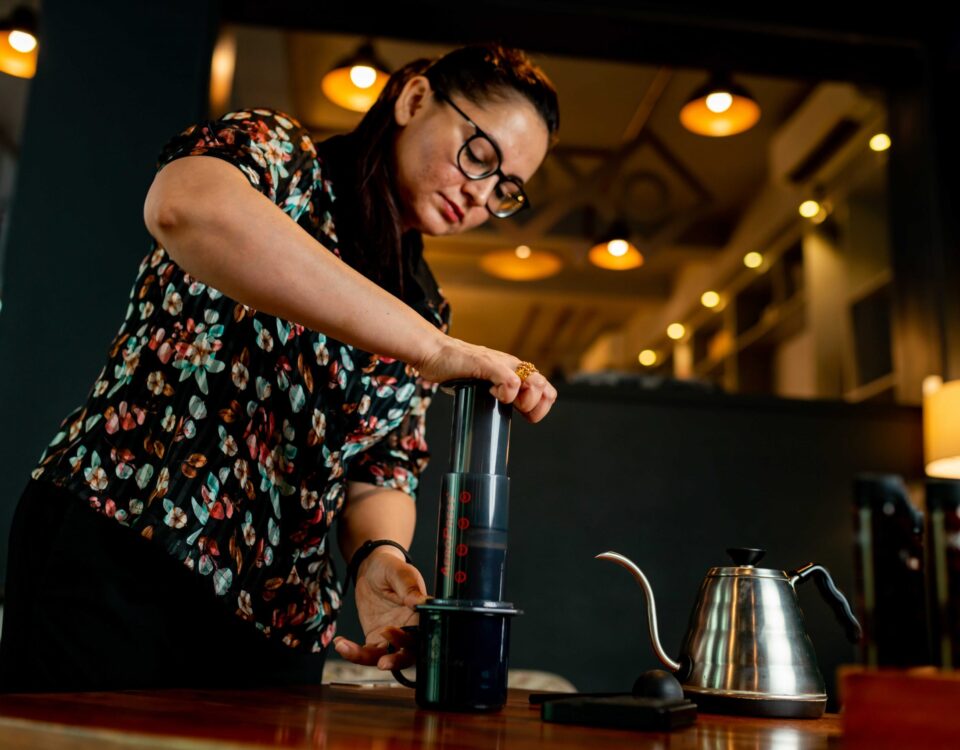
Shyira from Rwanda
29/08/2019
Conical Dripper
11/07/2022Quality of roasted coffee, it’s grind size and water are three aspects which directly effect the quality of coffee in your cup irrespective of the brewing method.

COFFEE QUALITY
We all have different preferences when it comes to coffee in terms of our choice of preferred flavours, level of brightness, body, aftertaste etc., which may be attributed to geographical location, altitude, coffee varietal, processing techniques etc. Your preference may also be dictated by your preferred choice of brewing equipment.
There are many aspects of coffee quality, which should be taken care by a good coffee roaster that would ensure that coffee tastes great once it is brewed. Once a roaster receives sample from a particular crop he cups (tasting of samples) it and depending on the quality of sample in cup she makes his buying decision. Now to ensure the quality she has to make sure that coffee is from the latest harvest, is free from defects, has appropriate density, moisture, water activity etc., and thereafter it is packed and transported in a way which would ensure that coffee quality is not effected by exposure to elements. Once coffee reaches a roaster she should check it again for quality and should make sure that coffee packaging is not damaged. Thereafter she stores it in a cool place preferably with humidity and temperature control, at Curious Life our coffee is stored in hermetically sealed bags in air conditioned store with total control over humidity and temperature.
Let’s assume that roaster has fulfilled all his duties and shipped you a good quality coffee roasted to perfection; now as a brewer/ barista you must check the coffee for freshness, date of roast, packaging and storing conditions do affect the freshness of coffee.
- Coffee should be fresh but that doesn’t mean that coffee just dropped out of roaster would taste better, coffee has to be rested before brewing as there is CO2 trapped in coffee which inhibits water entering the molecules and extracting the goodness. As coffee rests, this CO2 is released slowly, and that is the reason we have valves in coffee bags. In our case, where coffees are roasted on Loring in a pressrised and controlled environment that you let coffees rest a bit longer: 72-96 hrs for filter roasts and 5-6 days for espresso. This time window is to allow proper degassing of coffee beans and is relevant for whole beans; ground coffee degasses much quickly and also stales faster once exposed.
- Oxygen, heat and humidity are primary known factors which result in degradation of coffee flavours; longer the exposure more the degradation. Exposure to heat and humidity can be controlled with lesser effort however exposure to oxygen starts immediately after roasting, and it is important that coffee is stored in airtight bags, vacuum sealing, nitrogen flushing, placing deoxidizer inside the bag can further help in reducing the contact with oxygen. However moment the bag is opened your coffee is again exposed to oxygen and exposure is more with ground coffee as bigger surface area gets exposed, that’s the primary reason that pre ground coffee rarely tastes as good as freshly ground coffee. Storing in airtight bag with flushing out all possible air from the bag before resealing can help coffee remain fresher for longer time. Some coffee lovers even vacuum seal the bag after every use and some even make single serving doses in small vacuum-sealed bags and store it in sub zero temperature. It certainly helps though needs some extra effort. Always remember that before storing in sub zero temperatures, make sure that coffee bag is flushed free of any air and is absolutely airtight.
Now it’s time to ‘cup’ the coffee, which is nothing but a simple method of tasting coffee. This would tell you what sorts of flavours are there in this coffee that you should look forward to while brewing it.

GRIND SIZE
The surface of the whole bean forms a natural protection against atmospheric influences, and as soon as this is broken, deterioration sets in. On this account, coffee should be ground immediately before extraction if maximum efficiency is to be obtained.
Grind quality is important, for that you need a good grinder that gives you most uniform grind size. This is the reason that blade grinders are not recommended because these produce lot of fine powder and there is no way to control the size of grind. You must always use a burr grinder where you can adjust the grind size from very fine to coarse; these can be manual grinders as well as mechanical grinders. A good grinder would always give you most uniform grind avoiding too many fines and boulders.
By grinding the coffee, you are exposing more surface area to the brewing agent, water in our case and thus facilitating extraction. So finer you go quicker you shall be able to extract coffee, this however is limited by following:
- GRINDING EQUIPMENT: There is a limit to which a specific grinder can break down coffee beans.
- FILTRATION METHOD: After brewing, you would like to filter grinds from the brew and you would not like to grind finer than what your filter can strain, so you would strain coarser for a French press with a wire mesh filter and finer for an AeroPress with paper filter.
So grind size is generally dictated by:
- BREWING EQUIPMENT: Its ability to filter grinds in reasonable time, espresso machine may extract very fine grinds in 30 seconds however a drip method may take hours to filter that coffee.
- BREW TIME: We may let grinds sit in a French press for 6 to 10 minutes and even for longer time or for 12-18 hours in a cold brew method whereas an espresso shot is extracted within 25-40 seconds. A coarsely ground can be extracted equally well if we allow enough time for water to enter the cell structure of coffee and extract goodness.
- ROAST LEVEL OF COFFEE: A dark roasted coffee is easier to dissolve vis-à-vis a lighter roast, thus over-extraction leading to astringency comes in much sooner as you go fine.
- DESIRED FLAVOR PROFILE: If you generally keep your brew technique and time constant with the same coffee you may achieve desired flavor profile by grinding finer or coarser.
Too fine a grind at times leads to over extraction of coffee resulting in astringent-bitter flavor.
FOR OUR COFFEES WE RECOMMEND THAT YOU GRIND FINER THAN REGULAR AND TRY AND EXTRACT ALL THE GOODNESS. Unlike many commercial dark roasts, there is nothing to hide/ avoid in these coffees, just go on increasing your brewing efficiency.
SIMPLE MANTRA IS – Cup a coffee and taste it to know what exactly it holds in terms of flavours, keep tasting it starting from 8 minutes time mark to 20 minutes. Now when you brew it, keep grinding finer with every subsequent brew till you find most complex cup with maximum flavour notes you discovered during or you reach a point where you can feel astringent flavours on your palate (your palate would get dry, something similar to over brewed black tea). Now just go one notch coarser and in most likelihood you would have found your perfect grind size for a particular coffee for the selected brew method.
It’s always good to have a more complex and sweet cup even with acceptable bitterness rather than having fewer flavours in order to avoid bitterness.

WATER
Almost 98% part of the brewed coffee is water, so we must use water that is of best quality devoid of any undesirable odours or flavours containing desired minerals, as these are essential for extracting right flavours from coffee. This is what SCA (Specialty Coffee Association) recommends:
- Fresh, odour and colour free
- Desired TDS 150 mg/L (Acceptable range 75-250 mg/L)
- Desired Ph 7 (Acceptable 6.5 to 7)
- Desired Alkalinity 40 mg/L
- Calcium Hardness 4 grains or 68 mg/L (Acceptable 1-5 grains or 17 mg/L – 85 mg/L)
- Sodium 10mg/L
- Total Chlorine – 0 mg/L
If all this is too much of chemistry than it is a good idea to cup coffee using various waters available with you and go ahead with the one that provides best results.
USE BOILING WATER. It is recommended to brew coffee with water temperature ranging between 92 deg C and 94.5 deg C. This implies that coffee should never be boiled along with water or put in boiling water. It has been observed that for manual brewing, best results are obtained if you boil water and thereafter pour it into the coffee, travel of water from kettle to coffee grounds and brewing time shall bring the temperature down to the desired average temperature for brewing. This would also ensure that temperature and method followed is uniform for all the brews.
However this should not stop you from experimenting with water temperature or using high quality thermometers to monitor the temperature.
OUR COFFEES ARE CUPPED USING ‘HIMALAYAN’ BOTTLED WATER AND WE USE SAME DURING BREW FOR STANDARDISATION
BREWING BASICS
GOLDEN RATIO – 1:16
For all manual brew methods using hot water, this ratio works out best and has been suggested here, however you may try and vary it and taste it, at times you may like 1:15 and may also love 1:17. It is very important that to get consistent results we always weigh our ingredients and keep track of time.
So it’s always helpful to use a small scale and timer while brewing coffee.
PRE-HEAT
We all love our coffee to be hot, however brewing takes time and during this our coffee tends to cool down, so it is always a good idea to pre-heat our brewing equipment and our coffee carafe/ cups.
Reheating brewed coffee is not advisable.
BLOOM
This is a term used for the technique of letting the ground coffee breathe out CO2 trapped inside the fresh coffee. You generally pour 2-3 times the water to the weight coffee and make sure that coffee is fully soaked in water. Generally coffee is allowed to bloom for 30-40 seconds, during this time water displaces the CO2 and allows a better extraction.




